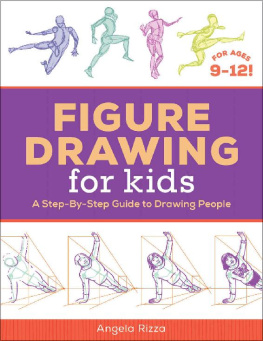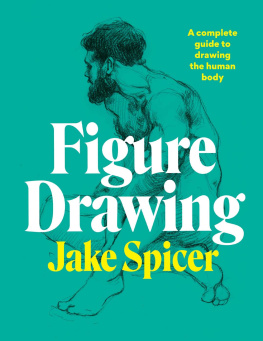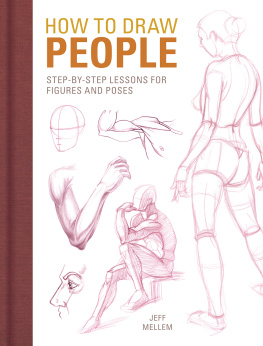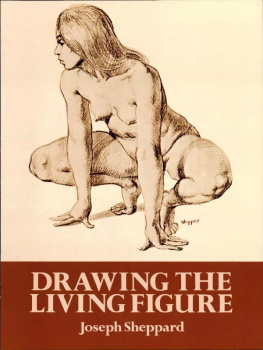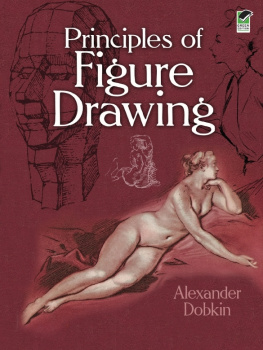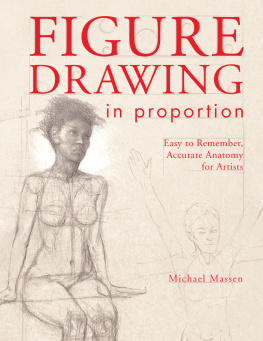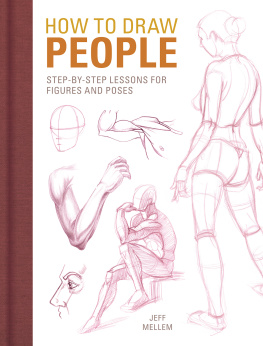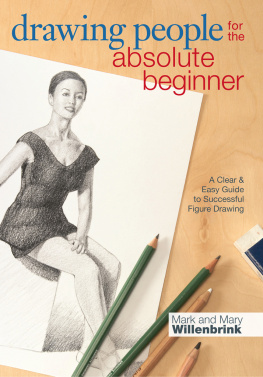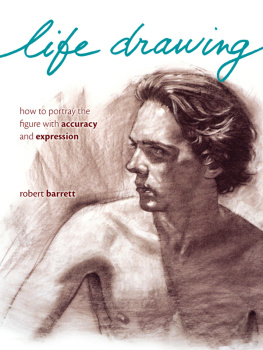Thank you for purchasing this Artist Network eBook.
Sign up for our newsletter and receive special offers, access to free content, and information on the latest new releases and must-have art resources! Plus, receive a coupon code to use on your first purchase from NorthLightShop.com for signing up.
or visit us online to sign up at
http://artistsnetwork.com/ebook-promo
Contents
CHAPTER 1
How to See Form
To capture the beauty and grace of the human body, view the figure as a collection of planes and shapes, and pay close attention to light, shadows, line quality and the third line.
CHAPTER 2
Training Your Hand
Drawing skill is a result of hard work, practice and acquirable eye-hand coordinationnot talent.
CHAPTER 3
Action and Gesture
Find the models gesture and learn how to use it as a guide in your drawing process.
CHAPTER 4
Making Better Lines
Master how to portray linework evocatively and combine it with tonal mass to create powerful drawings.
CHAPTER 5
A Portrait of the Hand
Train your eye to draw hands in a way that allows them to serve as portraitalmost as important as the face itself.
CHAPTER 6
Dynamic Heads
Putting life into a head drawing requires assimilating it with the rest of the body, capturing an attitude and using historically dependable techniques to capture a facial likeness.
CHAPTER 7
Putting Together the Human Form
How to analyze and correctly draw different areas of the body, and then bring them all together in one unified form.
CHAPTER 8
Drapery on the Human Form
Drapery has an anatomy all its own, and the knowledge of it helps you to analyze and draw folds on the human form.
CHAPTER 9
Composing Your Drawings
Learn how to achieve balance, rhythm and contrast in a drawing.
CHAPTER 10
How to Use Narrative in Your Art
Discover ways to make your narrative drawings and paintings speak eloquently to the viewer.
WHAT YOU NEED
Assorted drawing boards: Masonite board, canvas board
Assorted charcoal pencils: 2H and HB, charcoal white
Assorted compressed charcoal sticks
Assorted graphite pencils: 2H, H, HB; and graphite 5.6mm stick: HB, B
Assorted mechanical pencils: 0.5 and 0.3 often with H leads
Assorted papers (no newsprint): bond, toned, tracing
Assorted sanguine pencils and sticks: Both oil and chalk base
Assorted thin lead colored pencils
Ballpoint pen
Bulldog clips
Compressed charcoal dust
Eraser
Hand-held mirror
Pencil holder
Vine charcoal (medium)

Seated Male Figure
Dan Gheno,1996, colored pencil, 20" 15" (51cm 38cm) collection of K Ko
Introduction
For a while in the 1960s and 1970s, the study of the figure was declared dead by the art press. Indeed, many art critics and artists of the day proclaimed that all representational and even emotive, nonobjective arts such as Abstract Expressionism were pass, to be replaced in the future by a higher, more intellectual and minimalist form of nonmaterial, conceptual art.
Well, the future is here. Some things have indeed changed since then, or should I say changed back, such as the rebirth of the figurative movement. Actually, the figurative movement never died in the first place. The human form has always fascinated artists, and although artists of the figure went undetected by the media during that dry period, we never left the scene. Its the official fine-art world thats changed, becoming more inclusive of all aesthetic sensibilities, no longer treating the visual arts like some sort of horse race or a win/lose proposition.
When I began writing for Drawing magazine in 2003, I saw my articles as an organized series or chapters for a potential book that told a unified story on how to better draw the human figure. I wanted to prove how important it is to train your sensesyour mind, eye and handto work in unison. I wanted to demonstrate that drawing the figure is not a mindless act but that it takes a fusion of all these skills and time and a conscious, deliberative effort and practice to pull it off.
When I finally reorganized these articles into book form, I designed this book so it could be used by readers of all levels in a sequential manner as if it were a class on the essentials of figure drawing. In fact, if you are a teacher, I hope youll find my book useful, perhaps thinking of it as a suggestion for a week-by-week class outline and possibly treating it as a textbook.
For beginning artists who dont have access to a figure drawing class or for advanced artists who simply want to expand their understanding, try to use this book as a step-by-step study guide. Read through it at least once and try to absorb the broader meaning of the information presented. I suggest you then reread the book, setting aside one or two weeks per chapter, making drawings from the reproductions, trying to put the information in the text to use visually. Its only after you make this fusion of eye, hand and brain that the information truly becomes integrated and a part of your psyche.
I hope youll also find that each time you reread this book youll learn something new, something you missed before. This is true of most books on art technique. As your grasp of the material increases and your depth of understanding grows, you become more open to information you may have missed the first or second time. Perhaps it didnt seem important on the first read, or maybe it simply didnt register because you didnt have a proper frame of reference for it at the time. Its a psychological fact that we often dont see something right in front of our eyes until were ready to accept it. For instance, it is said that many of the early American indigenous people could not initially see the Spanish galleons anchored off the coast, because they didnt have the concept of such large boats yet. But while it may seem drudgery, with each rereading, every time you learn or relearn an old concept, the excitement of discovery you experience will become its own reward.
Its a long journey for all of us. Youre on your way when you make the decision to become an artist and then make the commitment to spend as much time as you can on your studies. Most important, you must get over your fear of the subject. Although the act of figure drawing is full of limitless complexities, its far from an impossible task that requires the use of crutches, such as a camera lucida. The only real hurdle is your apprehension when you first pick up a pencil and stare at that blank page. Stalling only makes it worse, making the job look bigger and fiercer than it really is. Like a swimmer facing a cold ocean, you simply have to dive in and start drawing.
Dan Gheno




